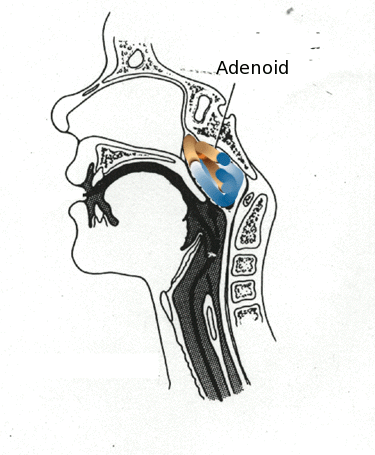Adenoid Facies
Anatomy:
Adenoid is a collection of lymphoid tissue in the mucous membrane overlying the basisphenoid area. It has an oblong shape, similar to that of a truncated pyramid. It infact virtually hangs from the roof of the naso pharynx. Its anterior edge of this tissue is vertical and lie in the same plane as the post nasal aperture. Its posterior edge gradually merges into the posterior pharyngeal wall. and its lateral edges incline towards midline. It is lined by ciliated columnar epithelium. The surface of adenoid has furrows.
The adenoid normally enlarges during childhood between 3 - 4 years. This is a period during which the child is most prone to respiratory infections. As the child grows older the adenoid regresses in size, may even disappear during puberty. The initial reduction in the size of adenoid has been attributed to the rapid enlargement of the nasopharynx when compared to the size of the adenoid.
A large adenoid causes nasal obstruction, mouth breathing, snoaring and restless sleep. It even causes change in voice i.e. rhinolalia clausa. Enlarged adenoid causes typical changes in the face of young children. These changes are collectively clubbed under the term adenoid facies. This is caused due to chronic mouth breathing during active stage of facial skeletal growth.
The features of adenoid facies include elongated face, pinched nostrils, open mouth, high arched palate, shortened upper lip, and vacant expression. Adenoid should always be removed along with tonsillectomy irrespective of its size, this is because it has a propensity to undergo compensatory hypertrophy after removal of tonsil.
